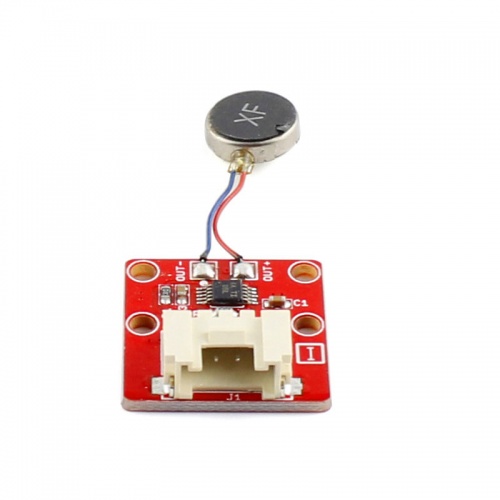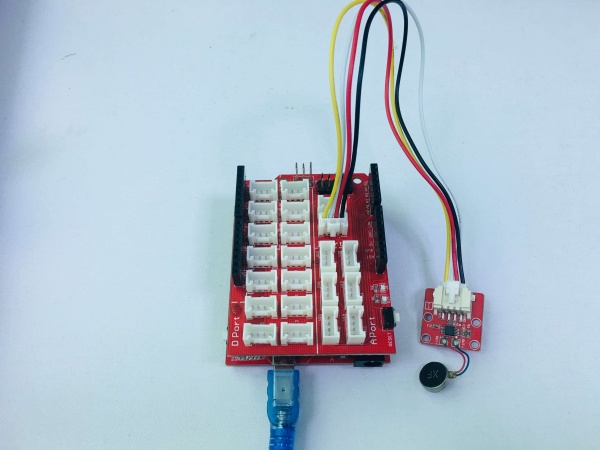Crowtail- Haptic Motor
Introduction¶
The Crowtail-haptail Motor is using little DRV2605 motor driver form TI. Its designed specifically for controlling haptic motors - buzzers and vibration motors. Normally one would just turn those kinds of motors on and off, but this driver has the ability to have various effects when driving a vibe motor. For example, ramping the vibration level up and down, 'click' effects, different buzzer levels, or even having the vibration follow a musical/audio input.
Mode: CRT00349H
Features¶
-
Specifically for controlling haptic motors- buzzers and vibration motors
-
Follow a musical/audio input
-
Support LRA (Linear Resonance Actuator) and ERM (Eccentric Rotating Mass)
-
Works with both 3V and 5V power/logic
Specification¶
-
Dimensions(mm):20.0(L)x20.0(W)x6.8(H)
-
Crowtail IIC interface
-
motor : round or flatte 10*2.7MM
-
using little vibration pancake ERM
Uager¶
We have set the pin to IIC interface and have a library for you to use, so it's usage pretty simple.
1.Hardware Connection
Connect the Crowtail- Haptic Motor to IIC port of the Crowtail - Basic Shield using a 4 pin cable .Then connect Arduino to PC by using a USB cable.
2.Softwart Connection
Download DRV2605 library for Arduino boards; Unzip and put it in the libraries file of Arduino IDE by the path: ..\arduino-1.0\libraries;
Upload it into your Arduino board and observe the vibration of the motor.
#include <Wire.h>
#include "DRV2605.h"
DRV2605 drv;
void setup() {
Serial.begin(9600);
Serial.println("DRV test");
drv.begin();
drv.selectLibrary(1);
// I2C trigger by sending 'go' command
// default, internal trigger when sending GO command
drv.setMode(DRV2605_MODE_INTTRIG);
}
uint8_t effect = 1;
void loop() {
Serial.print("Effect #"); Serial.println(effect);
// set the effect to play
drv.setWaveform(0, effect); // play effect
drv.setWaveform(1, 0); // end waveform
// play the effect!
drv.go();
// wait a bit
delay(500);
effect++;
if (effect > 117) effect = 1;
}

